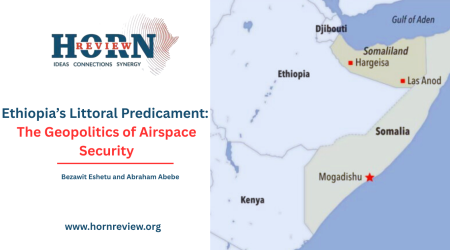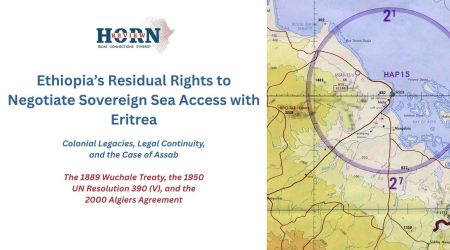
5
Nov
Severed from the Sea: The Parallel Histories of Bolivia and Ethiopia
At the eastern and western ends of two continents, Africa and Latin America, there exist two landlocked states: Ethiopia and Bolivia. Historically, both nations once controlled vital access to major seas, Ethiopia to the Red Sea and Bolivia to the Pacific Ocean. They lost this access due to wars and decisions made by leaders who are often viewed as incompetent. This left their strategic interests vulnerable.
Looking at the geography of these countries, we can see they are still close to the sea. There are only narrow strips of coastal land that prevent direct access. Bolivia shares a border of about 250 miles with Chile along the former Bolivian coast. Meanwhile, Ethiopia and Eritrea share a land border of roughly 1,000 km, which blocks Ethiopia from reaching the Red Sea.
The region Bolivia lost to Chile, called the Litoral Department, was a long, narrow stretch of desert land between the Atacama Desert and the Pacific Ocean. It spanned about 400 kilometers along the coast and covered around 120,000 square kilometers. Despite its harsh and dry conditions, it had great economic value due to its rich deposits of nitrates, guano, and other minerals. Antofagasta, its main port, was Bolivia’s important gateway to international trade, allowing essential access for exports. The area’s natural resources and closeness to Chile made it important for both countries.
Bolivia lost this territory during the War of the Pacific, which occurred from 1879 to 1885. This conflict involved Chile, Bolivia, and Peru. The war began when Bolivia imposed new taxes on a Chilean-owned mining company, breaking earlier agreements. In response, Chile occupied Antofagasta in 1879. Bolivia declared war and, through a mutual defense pact, brought Peru into the fight. Chile’s stronger military led to decisive victories on land and sea, ultimately defeating the allied forces. The Treaty of Ancón in 1883 ended the conflict with Peru, and the Treaty of Peace and Friendship with Bolivia in 1904 confirmed the permanent loss of the Litoral Department. Since that time, Bolivia has been landlocked, and regaining access to the Pacific Ocean has remained a key goal in its national identity and foreign policy.
The country began formally pressing for the return of its lost coastline soon after the 1904 Treaty of Peace and Friendship with Chile, which had officially recognized Chilean sovereignty over the Litoral Department. While the treaty granted Bolivia commercial access to Chilean ports and the right to build a railway to the coast, many Bolivians viewed it as an unfair agreement imposed under duress after their defeat in the war. Throughout the 20th century, Bolivia repeatedly sought to reopen negotiations for sovereign access to the Pacific Ocean, citing both historical grievances and the economic disadvantages of being landlocked. Diplomatic efforts were made at various points , notably in 1920, 1950, 1975, and 1987, but none resulted in a concrete resolution, as Chile maintained that the 1904 treaty settled all territorial matters permanently.
In 2013, Bolivia took its case to the International Court of Justice (ICJ). The goal was not to reclaim territory directly. Instead, Bolivia argued that Chile had a legal duty to negotiate sovereign access to the sea based on previous diplomatic discussions and promises. After years of hearings and written submissions, the ICJ announced its final judgment on October 1, 2018. The Court determined that Chile had no legal obligation to negotiate sovereign access for Bolivia. It concluded that earlier talks between the two nations did not create a binding commitment under international law. Although the decision left Bolivia still landlocked, the ICJ urged both countries to keep talking “in a spirit of good neighborliness.” It promoted cooperation along their shared border and suggested future diplomatic engagement.
Many Bolivians feel that losing their coastline to Chile during the War of the Pacific (1879–1884) was deeply unfair. They blame the weak and incompetent leadership of their governments before the war. They argue that Bolivia did not adequately defend its rights over the Litoral Department, especially the mineral- and nitrate-rich areas along the Pacific coast. The 1904 Treaty of Peace and Friendship, which formally gave the coastal territory to Chile, is widely viewed as having been signed under pressure from the victorious Chilean forces, leaving Bolivia landlocked against its will. This sense of historical injustice has greatly influenced Bolivian national identity. The loss of sea access has become a symbol of unfulfilled sovereignty and ongoing national grievance.
Despite being landlocked, Bolivia has kept a navy as a symbol of its maritime goals. Established shortly after losing its coast, the Bolivian Navy (Armada Boliviana) primarily operates on rivers and lakes, especially Lake Titicaca and major waterways like the Río Paraguay and Río Pilcomayo. Its mission also has a symbolic purpose: “recovering sovereign access to the Pacific.” Every year, Bolivia observes Día del Mar (Day of the Sea) on March 23. This day honors the soldiers who died in the War of the Pacific and reaffirms the nation’s historical claim to the coast. Through ceremonial units, training programs, and a fleet of small vessels, the navy keeps the national dream of returning to the Pacific alive. This makes Bolivia one of the few landlocked countries in the world with an active naval force.
A similar story unfolds at the opposite end of the African continent. Ethiopia, once a country with a strong presence on the Red Sea, became landlocked after an agreement following a war with Eritrea. Although the Ethiopian military had advantages during parts of the conflict, the country ultimately lost access due to indecision, political mismanagement, and with a lack of transparency toward the public at that time.
While Bolivia has been asserting its right to the sea it lost for over a century, Ethiopia has been formally landlocked for just three decades. The dedication, perseverance, and national commitment shown by Bolivians offer a powerful example for Ethiopia. Bolivia illustrates how a nation can keep the dream of maritime access alive by combining national pride with long-term strategic vision. This is a lesson Ethiopia can learn in its own quest for access to the Red Sea.
Also, the international community should pay greater attention to these issues, as they shows the limits of international law. While the modern state system has been shaped by treaties and legal principles, it is not always fair for nations to be bound by agreements made by past leaders, often without considering their strategic or economic interests. Rigid enforcement of such laws can maintain stability, but it may also entrench historical injustices and prevent countries from pursuing policies essential for their sovereignty and development.
Ethiopia should keep pursuing access to the sea, drawing lessons from Bolivia’s long and persistent struggle. Bolivia’s history highlights the importance of national assertiveness, strategic vision, and ongoing advocacy in maintaining maritime aspirations. This agenda deserves recognition and attention from the international community, and Ethiopia’s continued determination will be vital in advancing its claim and protecting its long-term national interests.
By Yabisra Yeshiwas, Researcher, Horn Review










